 |
 |
 |
| |
Pre-exposure prophylaxis (PrEP) uptake and associated factors among MSM and TGW in the PrEP Brasil demonstration project
|
| |
| |
Reported by Jules Levin
IAS Vancouver 2015 July 19-23
Presented by Beatriz Grinsztejn
B. Hoagland1, V.G. Veloso2, R.B. De Boni2, J.V. Madruga3, E.G. Kallas4, N.M. Fernandes2, R.I. Moreira2, A.Y. Liu5, B. Grinsztejn2, PrEP Brasil Study Team
1Fundacao Oswaldo Cruz, IPEC, Rio de Janeiro, Brazil, 2Fiocruz, Rio de Janeiro, Brazil, 3CRT, Sao Paulo, Brazil, 4USP, Sao Paulo, Brazil, 5Bridge HIV | San Francisco Department of Public Health, San Francisco, United States
WEBCAST:
http://pag.ias2015.org/Search/Index
AND You Tube:
https://www.youtube.com/watch?t=107&v=NRf5QgI20oU


Program Abstract
Background: In Brazil, men who have sex with men (MSM) and transgender women (TGW) are the populations most heavily affected by the AIDS epidemic. Although the WHO recommends PrEP for these populations, the feasibility and interest in this prevention strategy in real world settings in low and middle-income countries are unknown. This study aims to describe PrEP uptake and associated factors in Brazil.
Methods: PrEP Brasil is a demonstration project to assess the feasibility of implementing PrEP provided at no cost to high risk MSM and TGW within the Brazilian public health system. The project was advertised through social and other media. Participants were assessed for PrEP eligibility at FIOCRUZ-RJ, CRT-SP and USP-SP. At USP, 100% participants were self-referred, while at Fiocruz and CRT they were either self-referred or assessed for participation during HIV-testing or post-exposure prophylaxis provision. Predictors of PrEP uptake were assessed using a Poisson regression model.
Results: Of 986 MSM/TGW approached between April/2014 - April/2015, 798 were potentially eligible and 409 were enrolled. PrEP uptake was 51.25%. Median age at enrollment was 29 years (IQR 25-35); 93.5% had ≥12 years of education; 83.9%, 8.8% and 5.9% identified themselves as homosexual, bisexual or TGW, respectively (Table); syphilis prevalence, rectal Chlamydia and Gonorrhea detection were 21.3%, 8.2% and 4.7%, respectively. In multivariate analysis, factors associated with PrEP uptake were: recruitment at CRT-SP (aRR 1.27; 95% CI 0.99-1.62) or USP-SP (aRR 1.72; 95% CI 1.33-2.24) vs. FIOCRUZ; having a steady partner (aRR 1.45, 95% CI 1.18-1.78); having an HIV-test within the last 12 months (aRR 1.33, 95%CI 1.01-1.74); prior PrEP awareness (aRR 1.27, 95%CI 1.0-1.59); and having ≥ 2 male condomless anal sex partners within the last 12 months (aRR 1.65, 95% CI 1.32-2.05).
Conclusions: This is the first PrEP demonstration project for MSM and TGW in a middle-income country. Overall, PrEP uptake was high. The higher uptake among those at higher risk and with an existing awareness of PrEP emphasizes the importance of establishing strategies to improve HIV risk perception and PrEP awareness in the MSM and TGW communities in Brazil.


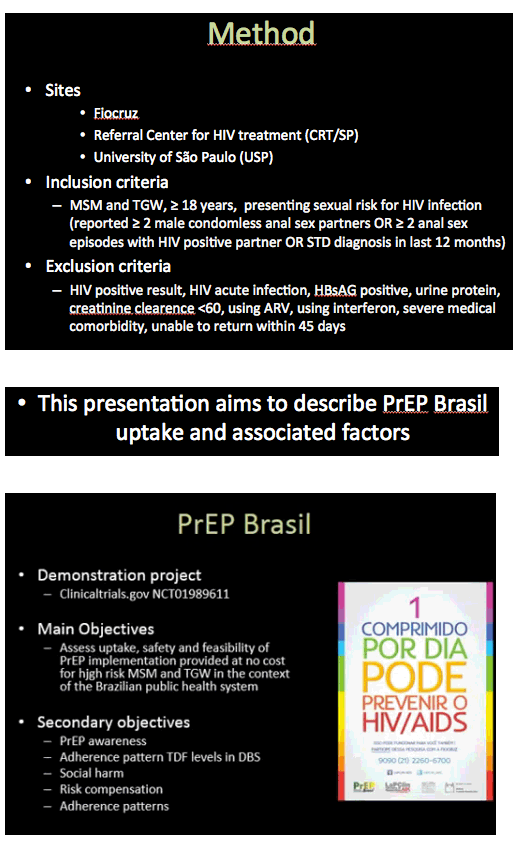
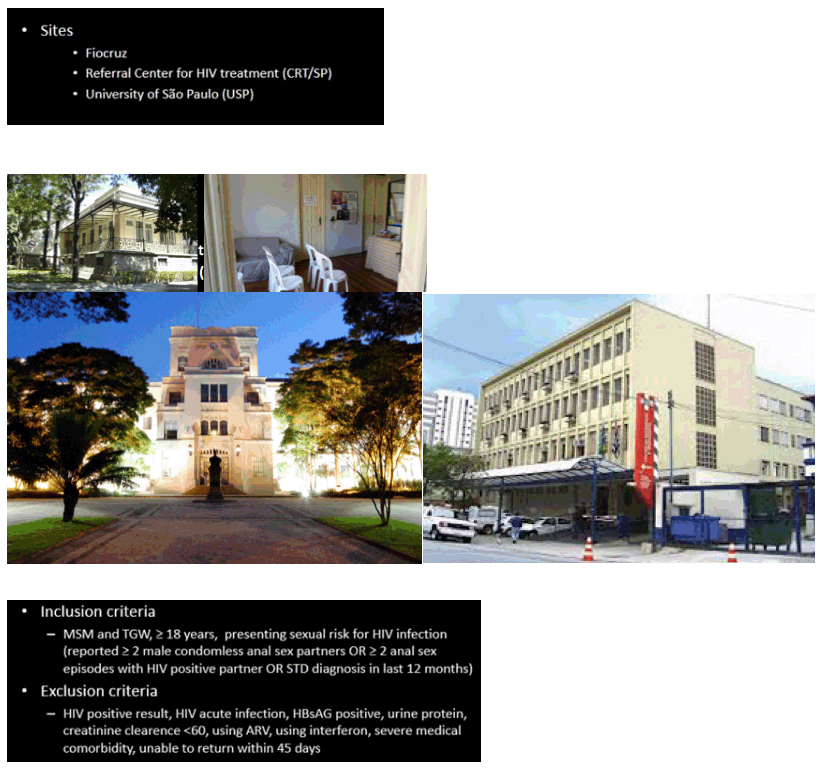
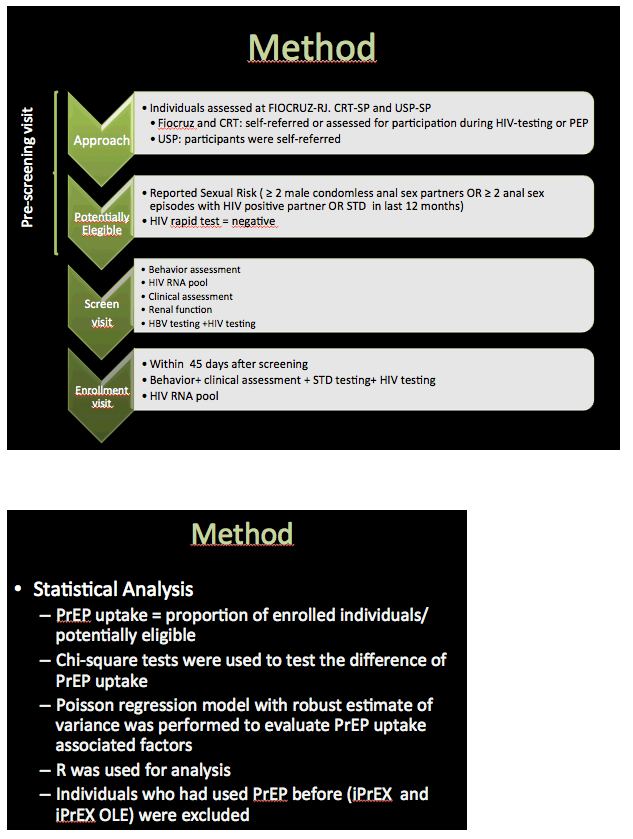
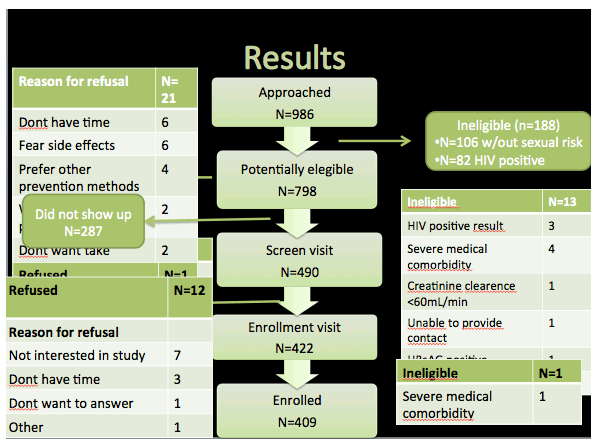
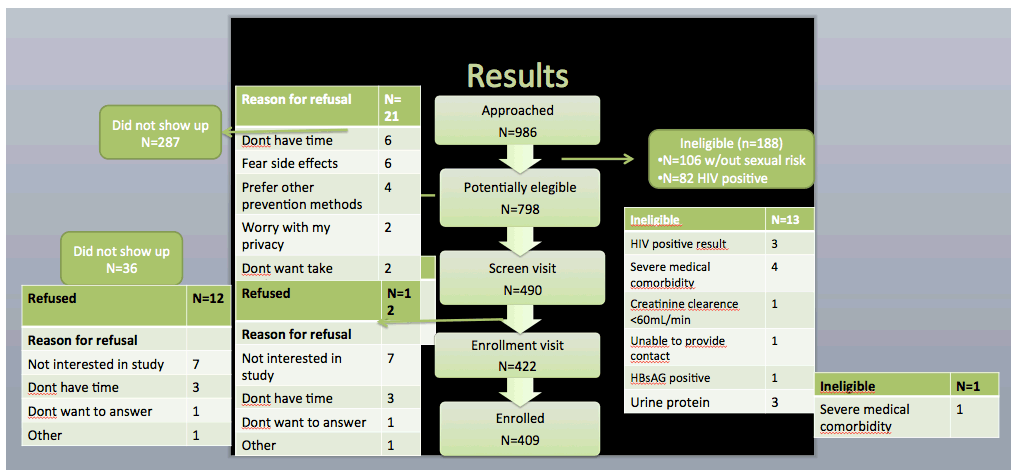

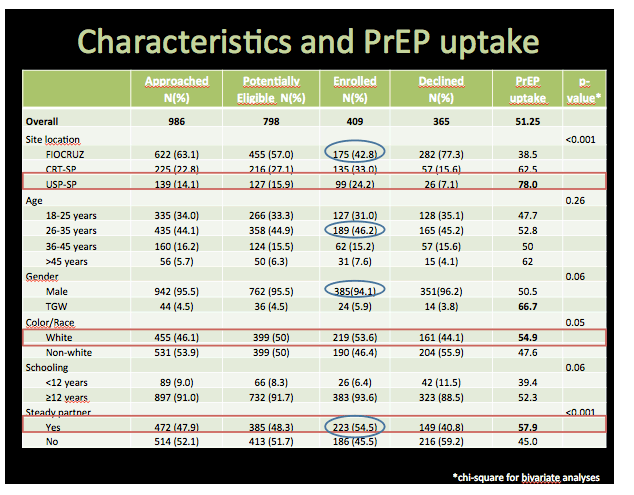

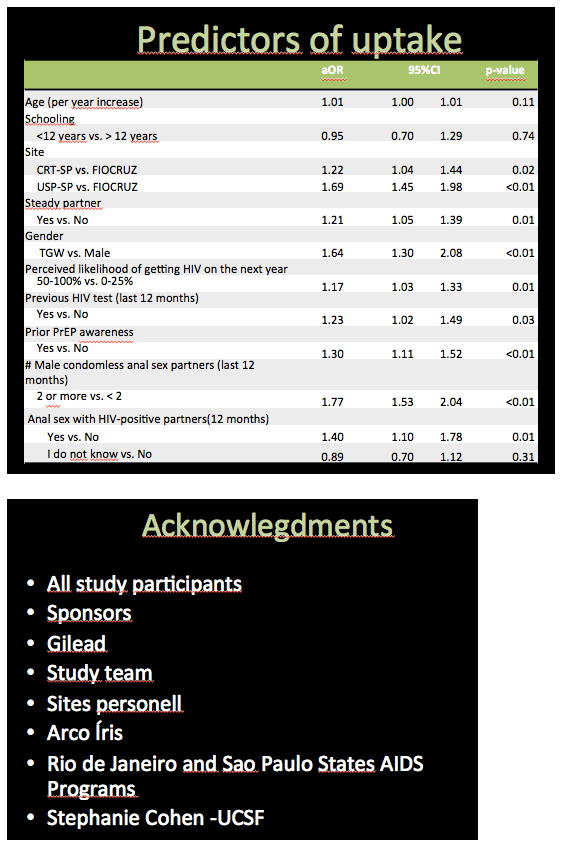
|
| |
|
 |
 |
|
|